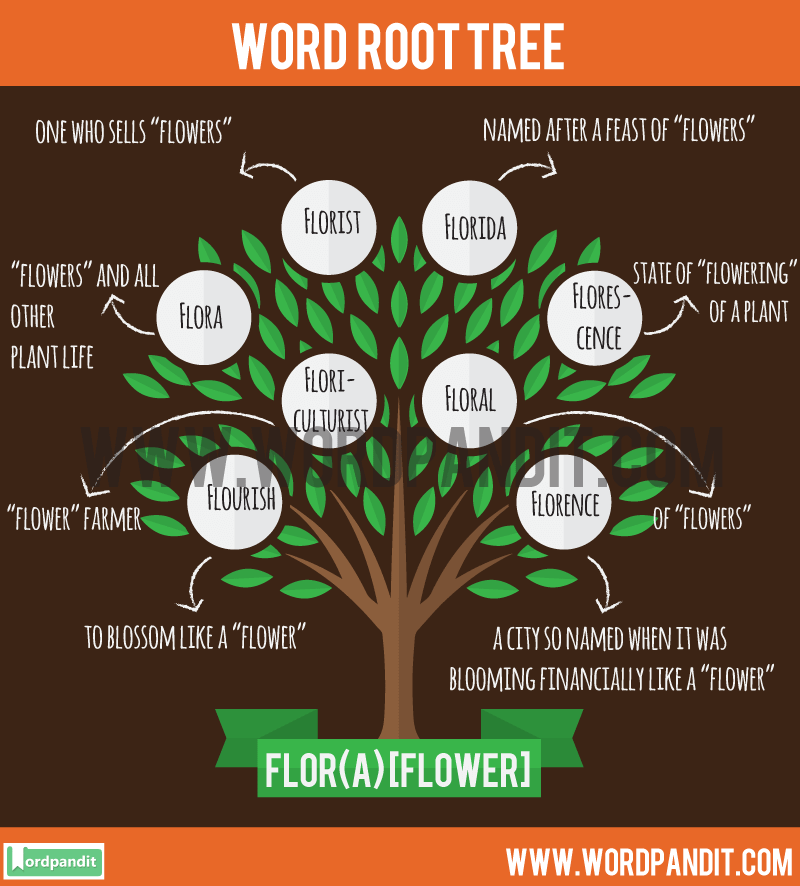Definition & Meaning: Flor(a) Root Word
The root word Flor(a) is derived from latin, meaning flower. There are multiple words based on this root word Flor(a).
When you need to buy a bouquet, you go to a florist : someone working with flowers. In the same way, floral means flowerlike and Flora flora is the plant life of a particular time or area.
Words Based on the Flor(a) Root Word
Following is a list of words based on root word flor(a) :
1. Florist: one who sells “flowers”
2. Floral: of “Flowers”
3. Floriculturist: “Flower” farmer
4. Florida: Named after a feast of “flowers”
5. Florence: A city so named when it was blooming financially like a “flower”
6. Flora: “Flowers” and all other plant life
7. Efflorescence: State of “flowering” of a plant
8. Florescence: State of “flowering” of a plant
9. Flourish: To blossom like a “flower”
10. Florid: You do not like it because it has too much decoration or is too elaborate.
11. Noctiflorous: Blooming at night
12. Uniflorous: Having just one flower
13. Floricide: Something which kills or destroys flowers
14. Floreated: Decorated with floral designs.
15. Floricultural: Relating to or involving floriculture which is the growing of flowers.
16. Florivorous: Eating flowers or plant species.
With this, we come to an end of this lesson on Root word Flor(a). Hope you’ve learned many new words based in the root word Flor(a). Keep learning, keep growing! Here’s wishing you enriching vocabulary. Goodluck!









Good